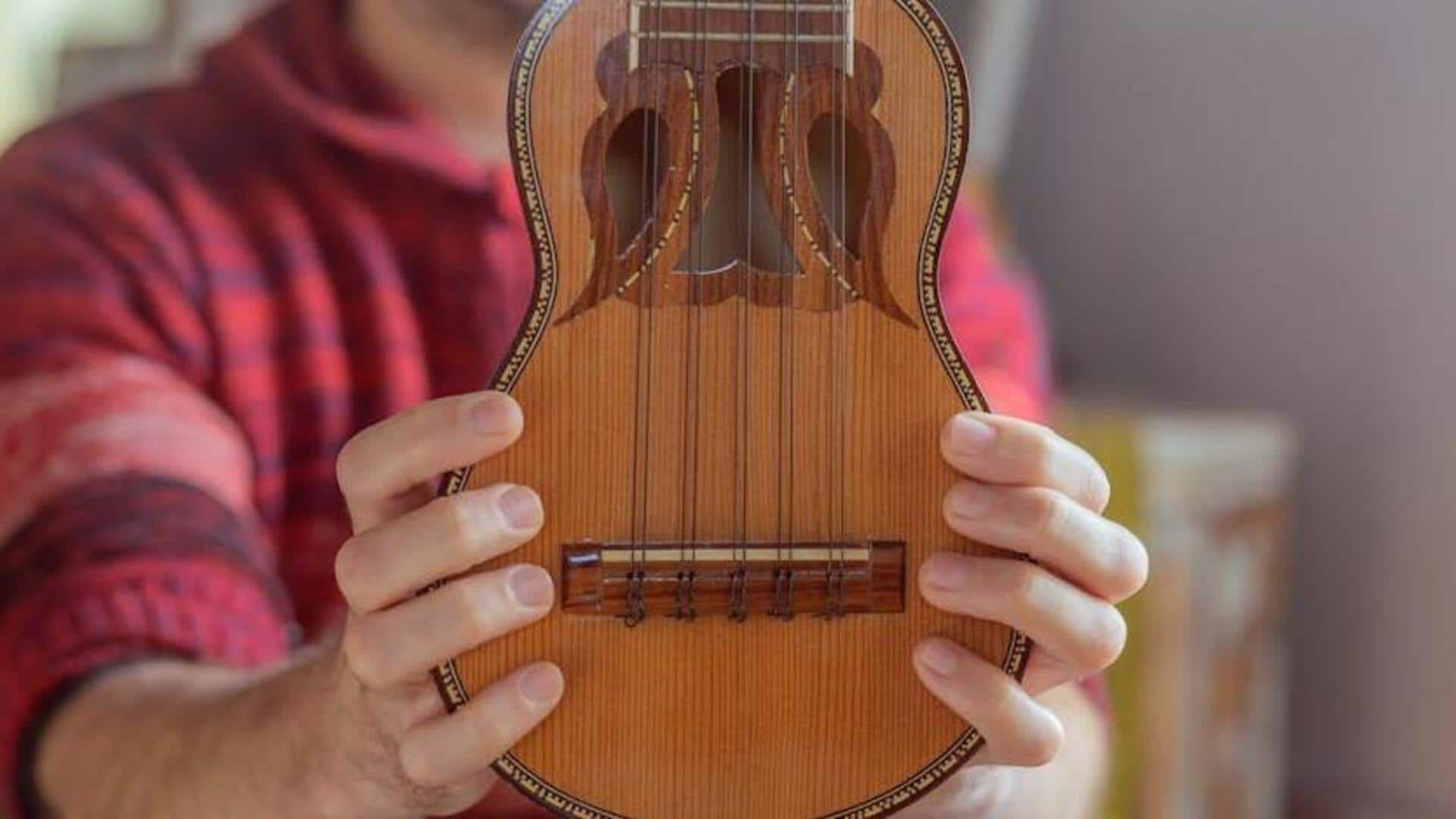
Unveiling the world of charango music creation
What's the story
The charango, a small Andean stringed instrument from the lute family, holds deep roots in the Quechua and Aymara cultures of Bolivia, Peru, and other South American regions. Its unique, enchanting sound has captured the hearts of musicians and listeners globally. This article explores the journey of making music with the charango, from choosing the perfect one to mastering its strings.
Selection
Choosing your first charango
Choosing your first charango is an important decision in your musical journey. While traditional charangos are crafted from armadillo shells, contemporary ones use wood due to ethical concerns. Examine the instrument for clear, even grain in the wood, and check that the strings are aligned correctly. Expect to pay anywhere from $100 to over $500 depending on the quality of craftsmanship and materials used.
Basics
Learning basic techniques
Once you get your charango, you need to learn the basics of how to play it. Start with simple chords and strumming patterns. Once you are comfortable with that, you can move on to more complex melodies. There are plenty of resources available online. Tutorials and instructional videos can be particularly useful for beginners. Make sure to practice regularly. Even 30 minutes a day can lead to steady progress.
Tuning
Understanding Charango tuning
The standard tuning for a charango is GCEAE, which can be a bit tricky if you're used to other stringed instruments like guitars or ukuleles. Mastering the tuning of your charango is crucial as it directly impacts the quality of the sound you'll produce. Electronic tuners make this task a whole lot easier by giving you precise measurements.
Genres
Exploring musical genres
The charango is not limited to traditional Andean music; its versatility shines in various other genres. It has found its way into folk, classical, pop, and rock music around the world. Exploring these genres not only broadens your skills but also opens up new creative possibilities, allowing you to harness the unique adaptability and sound of the charango in fresh musical contexts.
Collaboration
Collaborating with other musicians
Playing with others teaches you rhythm and harmony, and gives you experience performing in front of people. Join a local music group or an online community to share tips and collaborate on projects. This will not only improve your technique but also expose you to different styles and interpretations of charango music.